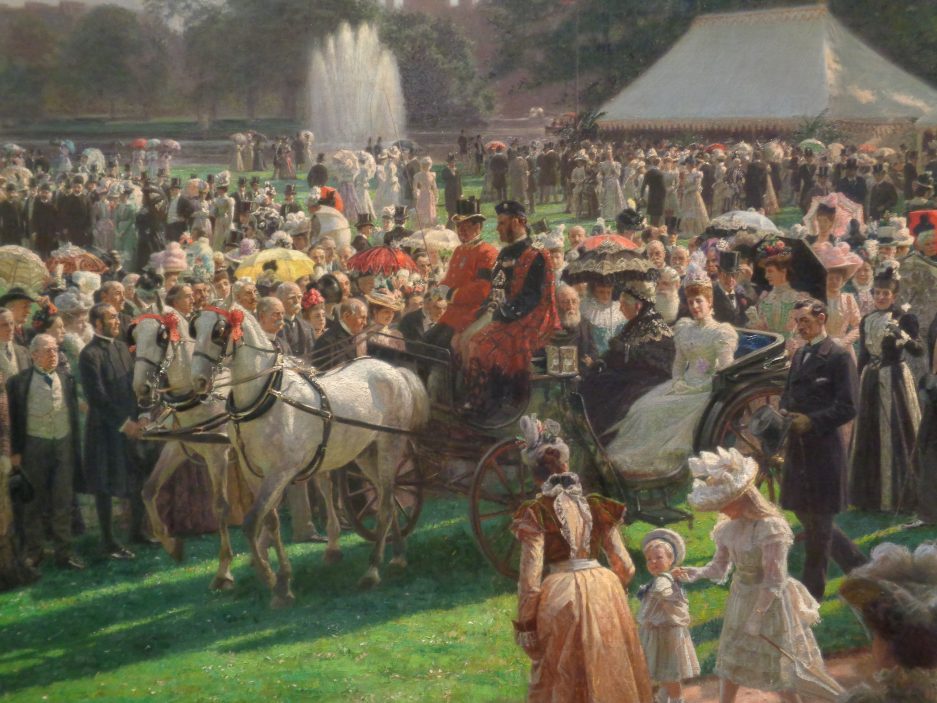The National Portrait Gallery is one of our favourite places to visit – you can drop by and see a section then come back and see another, ad infinitum. When the Gallery closed in 2020 for a much-needed refurbishment, we were excited when it was announced that it was reopening in June 2023, and apprehensive about how much a loved institution might have been changed.
So finally, after three years and £41 million, what did we think? For a start, its brighter and there are now two visitor entrances which makes it less congested, and it also allows aspects of the original fixtures to shine. Some of the hang is also much improved and allows visitors to see the portraits, photos or busts better.


The presentation is still more or less chronological with a few themes thrown in. We also get to see portraits, busts, and photos that either have never been seen before or have not been displayed for years, even decades. In addition, there were features on techniques in portraiture such as engravings and mezzotints as well as chronicling the early history of photography. Old favourites and iconic likenesses from the collection are back. It’s a place where you can go to again and again.


However, there’s also a lot to nitpick with the new National Portrait Gallery. First, with the building itself – the new visitor entrance as pointed out at the beginning eases congestion as it allows visitors to enter and exit via two different doors, but the design of the doors in the new entrance leaves a lot to be desired. I can understand the rationale behind the design as its meant to echo the doors of several churches and cathedrals in Italy; but to commission Tracey Emin who in our opinion is not a good artist displayed poor judgement. The best thing that can be said about her engravings is that they look as if they have been done by an untalented five year old using their non-dominant hand, and the worst that they’re a puerile embarrassment. If the management wanted to go for childish illustrations, then they could have done better and saved money by commissioning children from across the UK to submit in works to adorn the new door.
Next is with regards to the subjects. We can understand that not everyone can be accommodated and there’s not enough space to display everything in the NPG’s collection, but it does beg the question – who makes the decision as to who to include and exclude? Some glaring omissions include Captain Robert Falcon Scott; the women who made up the suffragist movement; Margaret Bondfield, first female cabinet minister and Privy Counsellor; Daley Thompson, a double Olympic champion who dominated his field during the late 1970s and throughout the 1980s, among others. And for some reason medieval English kings have been enclosed in large boxes despite having perfectly good frames.
There’s also what we suspect is the usual employment of the box ticking exercise. It seems to us that the NPG is desperate to increase representation among women and minorities to the point that they even shoehorn people who have absolutely nothing or little to do with the UK. The likes of Anna May Wong and Florence Mills are American, sure they might have worked in the UK for a time but what makes them deserve of a place in the NPG pantheon at the expense of someone homegrown? The most baffling however is the inclusion of a portrait of Toussant L’Ouverture who was the leader of the Haitian independence movement against France. Why? He has nothing to do with Britain and British history at all.
And finally, there’s the employment of the familiar trope that seems to be de rigueur with British museums & heritage sites now and that’s the obsession with race and slavery. Many of the interpretation of some key figures especially from the 18th and 19th centuries are focused on slavery as if that’s the only aspect of their lives. Others are crouched in the usual “white person bad, UK bad” bellyaching that’s blighted our intellectual discourse and as a result yet again reduces the subject to the level of a pantomime villain or victim. Other captions are almost patronising to the point of insulting the visitor’s intelligence. We’ve noticed this over the years that we have been visiting museums and galleries – that the captioning is pitched at the level of an intelligent 10 year old, which is fine if that’s what you are. Not so good if you like being treated like an adult.
The one saving grace perhaps is despite the one-dimensional focus on race, gender, and slavery with some of the displays, the NPG have not decided to go in the way of the Tate and the National Trust when it comes to indulging in cancel culture. As the director Nicholas Cullinan told the Daily Telegraph, “We’re not here to make moral judgements about people, [m]ost [people] understand that everyone does good and bad things.” It would be great if this view was consistent along the interpretation of the displays.
The shop is slightly disappointing as well. For an establishment with a huge collection of portraits the postcard collection is poor. However, should you be in the market for a plaster death mask of John Keats, the NPG has it. A snip at £ 265. Don’t all rush.
Finally, NPG, if you’re going to demand that people go paperless with their tickets, make sure your Wifi network can cope.
The National Portrait Gallery is open every day. Admission to the permanent collection is free, there is a charge for special exhibitions. For more information go to: https://www.npg.org.uk/
The bloggers visited the gallery on 26 July 2023
Photos taken by bloggers

Thanks for this
We’re going in November.
Kat
Sent with Proton Mail secure email.
LikeLiked by 1 person
You’re welcome. Enjoy your visit!
LikeLike